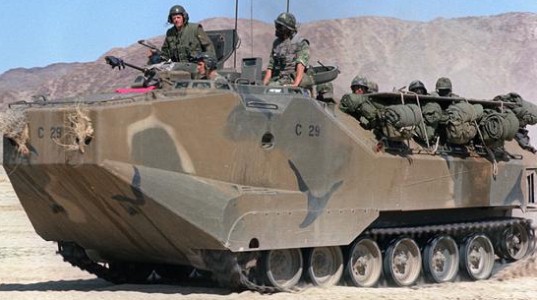
Landing Vehicle, Tracked, Personnel, Mark 7 in Twenty-nine Palms, California.

Most of the crew of this LVTP7 is visible: the driver is in the left front sponson, the troop commander is sitting behind him, and the vehicle commander is standing in his weapon station. The cargo hatch covers are open, allowing the marines inside to enjoy the view and relatively fresh air. The troop commander's M17C periscope, visible just in front of his vision cupola, allowed him to see over the driver's cupola while buttoned up. The port water jet deflector is visible above the idler wheel. On the top of the vehicle's nose is the engine's air inlet grille. The gunner's optical sight provided either unity or 8x magnification. (Picture taken 28 Apr 1982 by SSgt. Parker; available from the Defense Visual Information Center.)

A glimpse into the troop compartment is provided by this image. The men sat on three rows of seats, one attached to the wall on each side of the compartment and the third mounted on the floor in the center of the compartment. The side rows were foldable and the middle was removable to provide room for large cargo. The cargo hatch covers in the roof are open on this vehicle, and the outline of the personnel door is visible in the left side of the rear ramp. The circular taillight-stop lights are mounted above the deflector guards for the water jets. These marines are taking part in Exercise Solid Shield '87. (Picture taken 2 May 1987 by PHC Ed Bailey; available from the National Archives.)

The seats are shown here deployed for troops on the left and folded for cargo on the right. (Picture from FMFM 9-2 Amphibious Vehicles.)
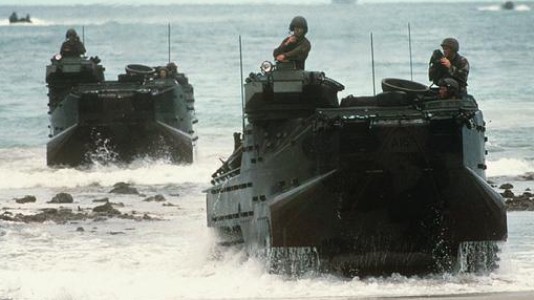
These AAVP7A1s are fitted with the Cadillac Gage weapon system mounting both the .50cal M2HB machine gun and the 40mm Mk. 19 grenade launcher, and smoke grenade launchers are also mounted on the weapon station. The gunner's M36E1 periscope provided 7x or 1x magnification. Another external difference is that the headlight cluster housings are square instead of the earlier round types. Bosses for attaching applique armor are visible on the sides of the hull. (Picture taken 1 Jan 1992; available from the Defense Visual Information Center.)
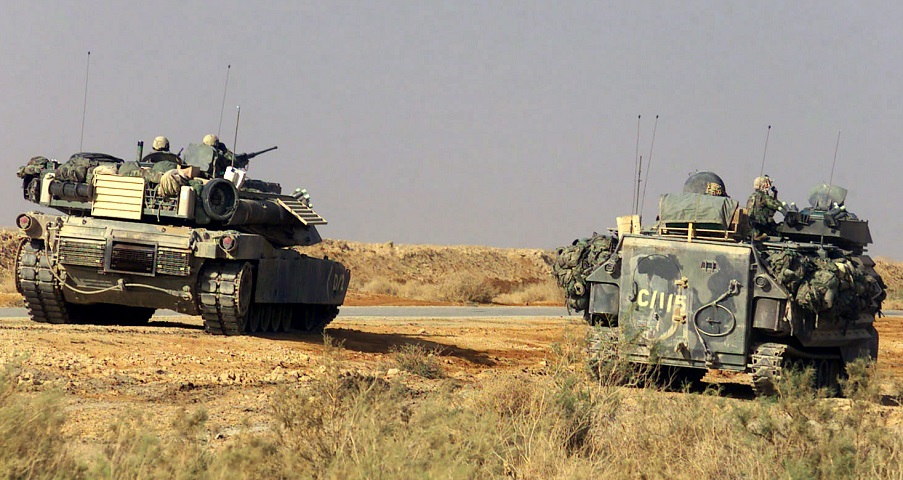
The size of the AAV7PA1 can be compared here with an M1A1 tank. Note that the tank is fitted with track retaining rings on the drive sprockets. (Picture taken 1 Apr 2003 by SGT Kevin R. Reed; available from the National Archives.)
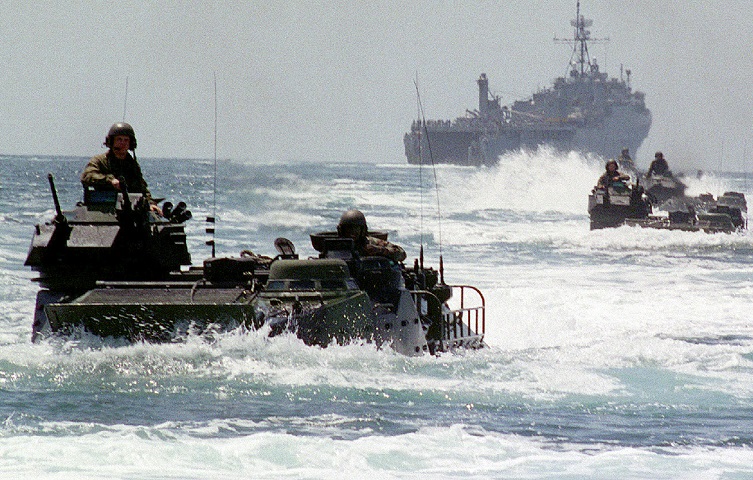
The freeboard of waterborne AAVP7A1s can be seen here. The vehicles are on their way towards the beach after disembarking from the USS Mount Vernon (LSD-39) in the background. The picture was taken during Exercise Kernel Blitz '99. (Picture taken 24 Apr 1999 by CPL William J. Resinger; available from the National Archives.)
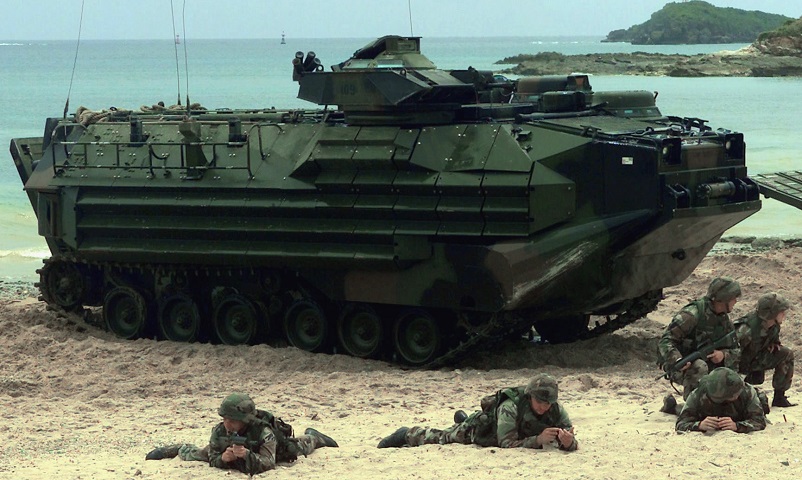
The AAV RAM/RS program sought to restore some reliability and performance that upgrades and increased weight had cost the vehicle. Applique armor suites like the one pictured, for example, had decreased ground clearance to an unacceptable degree. In addition to inheriting the engine and transmission from the M2 Bradley, the latter vehicle's suspension (including return rollers) was incorporated, restoring ground clearance to 16-18" (41-46cm). Contrast the characteristic Bradley road wheel spacing and the presence of return rollers on this vehicle with the suspension of earlier vehicles. A folding trim vane has also been added to the underside of the bow (it is deployed on the vehicles in the image above), and the vehicle can handle 120" (300cm) plunging surf. (Picture taken 14 May 2003 by LCPL Antonio J. Vega; available from the National Archives.)
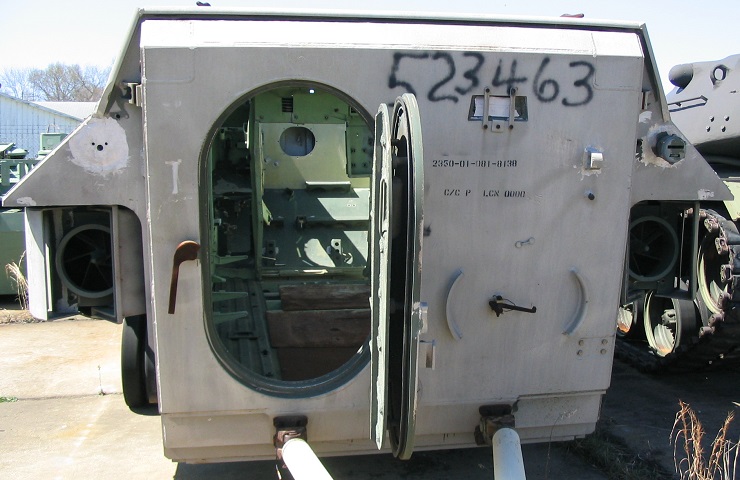
The rear of a vehicle hulk is shown here. The personnel door in the rear ramp is open, and towing bars are attached to the towing eyes under the ramp. The stern vision block can be seen in the ramp under the numbers 3 and 4, and below this are two brackets for tow cable stowage, though the cable itself is missing. The left-side taillight-stop light is also absent, but its mounting point can be seen. The circular water jets on each side of the vehicle are also visible recessed in their deflector guards.

A detail of the water jet is shown here. A deflector rotated around the jet to steer the vehicle, and the jet itself was normally covered when not in use. The jets were powered by drive shafts connecting them to power transfer assemblies on the transmission's power take-off.
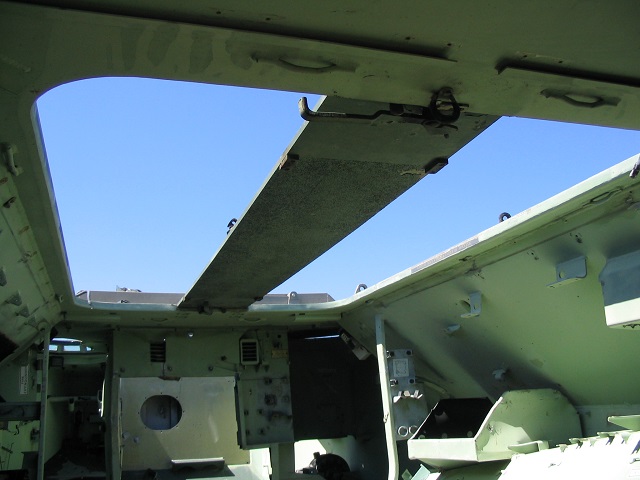
The personnel compartment is shown here, looking in from the open rear ramp personnel door. The roof cargo hatch covers are absent, allowing us to see the size of the roof openings. A shelf for a battery box can be seen to the front right side of the vehicle, and radio equipment would be stowed beside the battery box towards the vehicle's rear. The engine compartment covers are missing, allowing us to see up into the empty engine compartment towards the front of the vehicle. The troop commander's position can be seen to the front left of the personnel compartment.